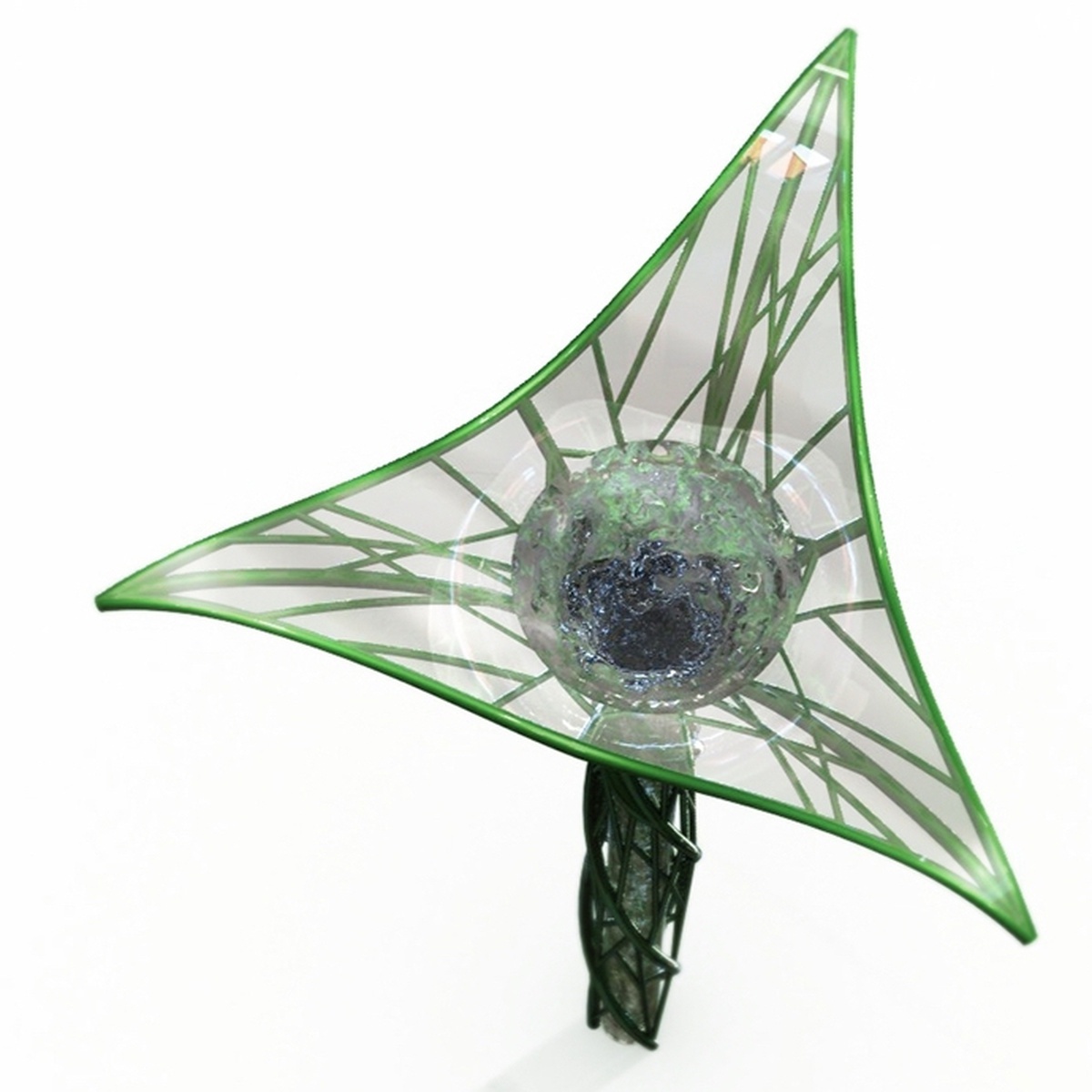Museo del Design del Friuli Venezia Giulia – Associazione di Promozione Sociale
P. IVA e CF 02863400301 – info@mudefri.it
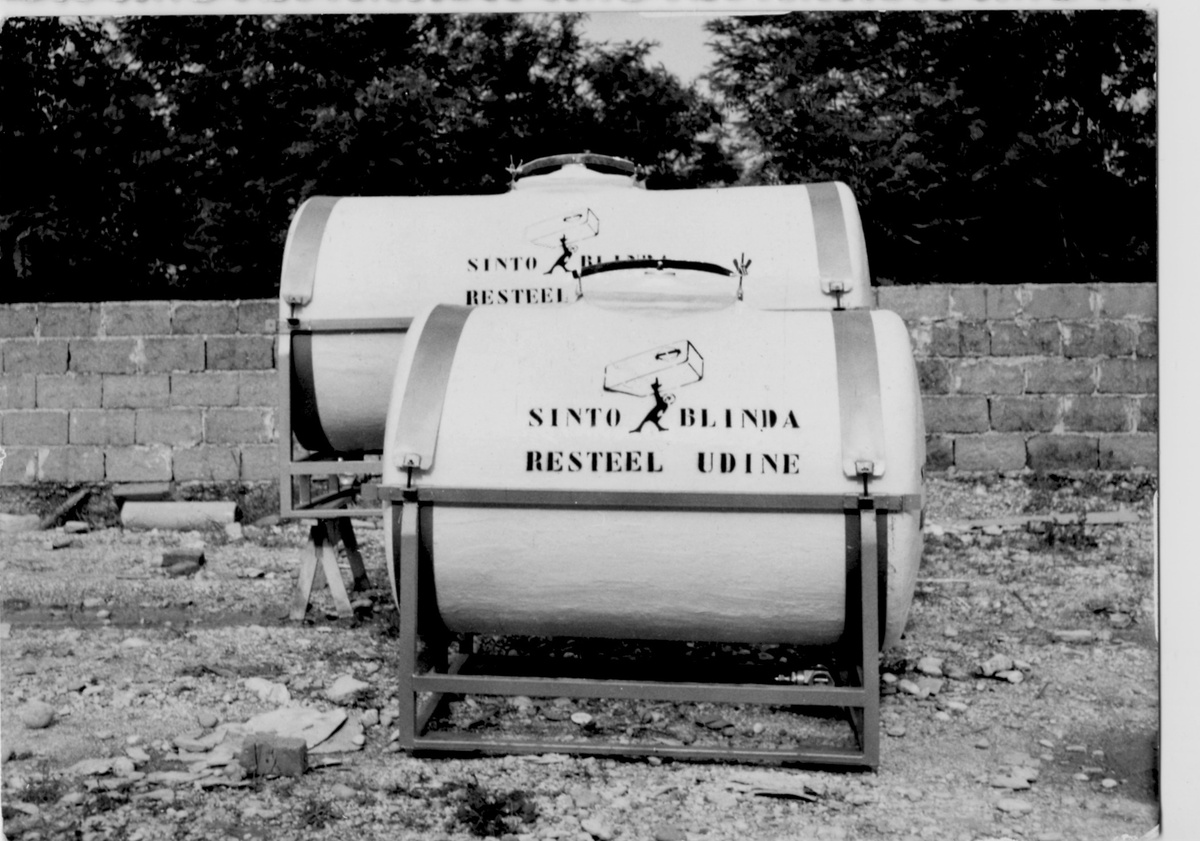
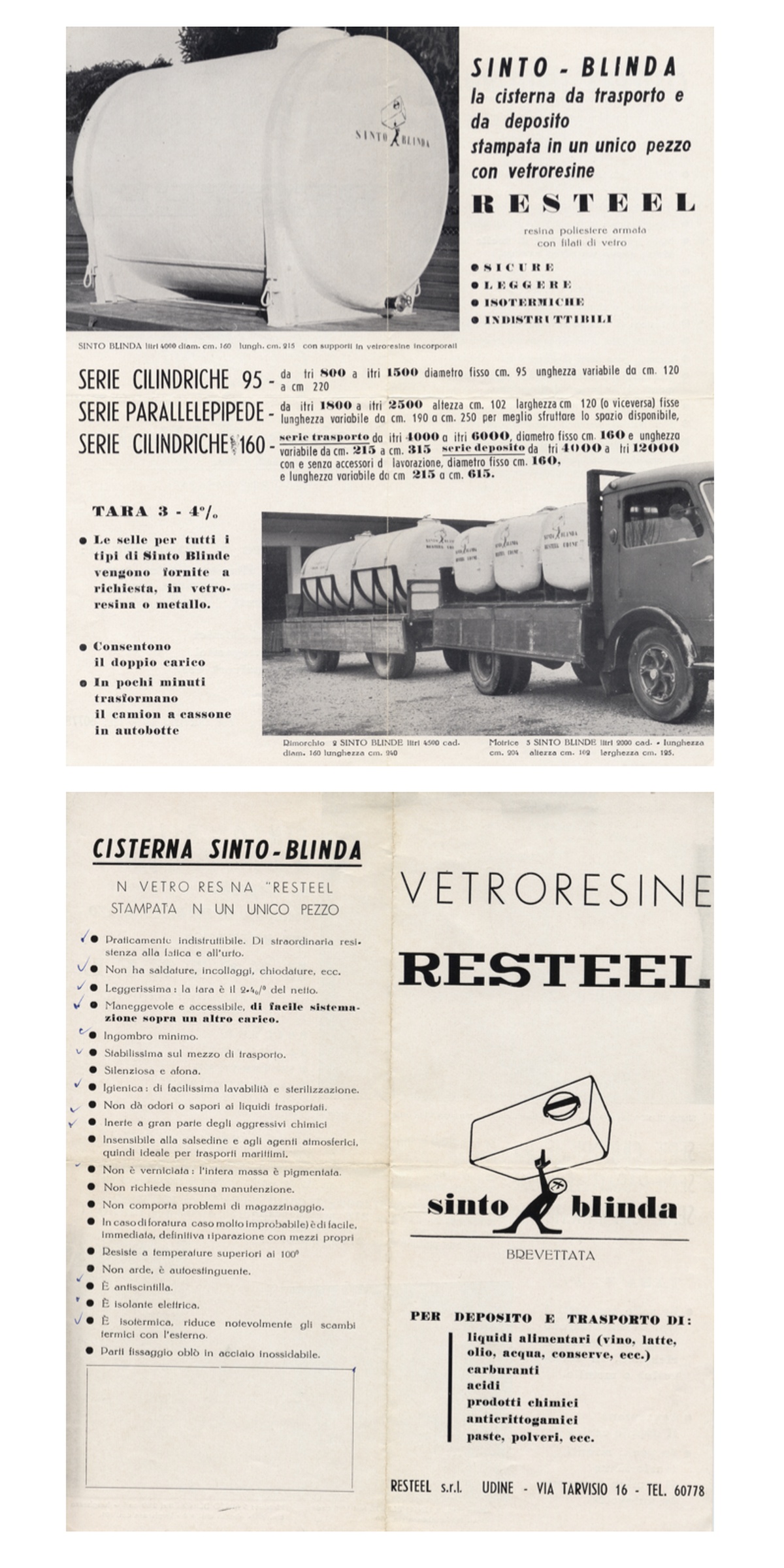
The company Vetroresina© became a world leader in the manufacture of maxi-sized tanks. The material was ideal for creating large, lightweight, leak-proof containers, which with the appropriate finishing, could be adapted to a wide range of uses. With Sinto Blinda, Gian Pietro Borgnolo won the Plastics Industry Award in 1968.
“The most economical fiberglass tank in kit form” announced the brochure: a 2000-litre lightweight container – weighing 32 kg – easy to transport and assemble, could be used to store water or other liquids and was contamination-proof and resistant to chemical and atmospheric agents. A new application by Vetroresina© designed to be easily transported and mounted by anyone. An idea intended to be disseminated worldwide, as evoked by the image behind the photo of the product.
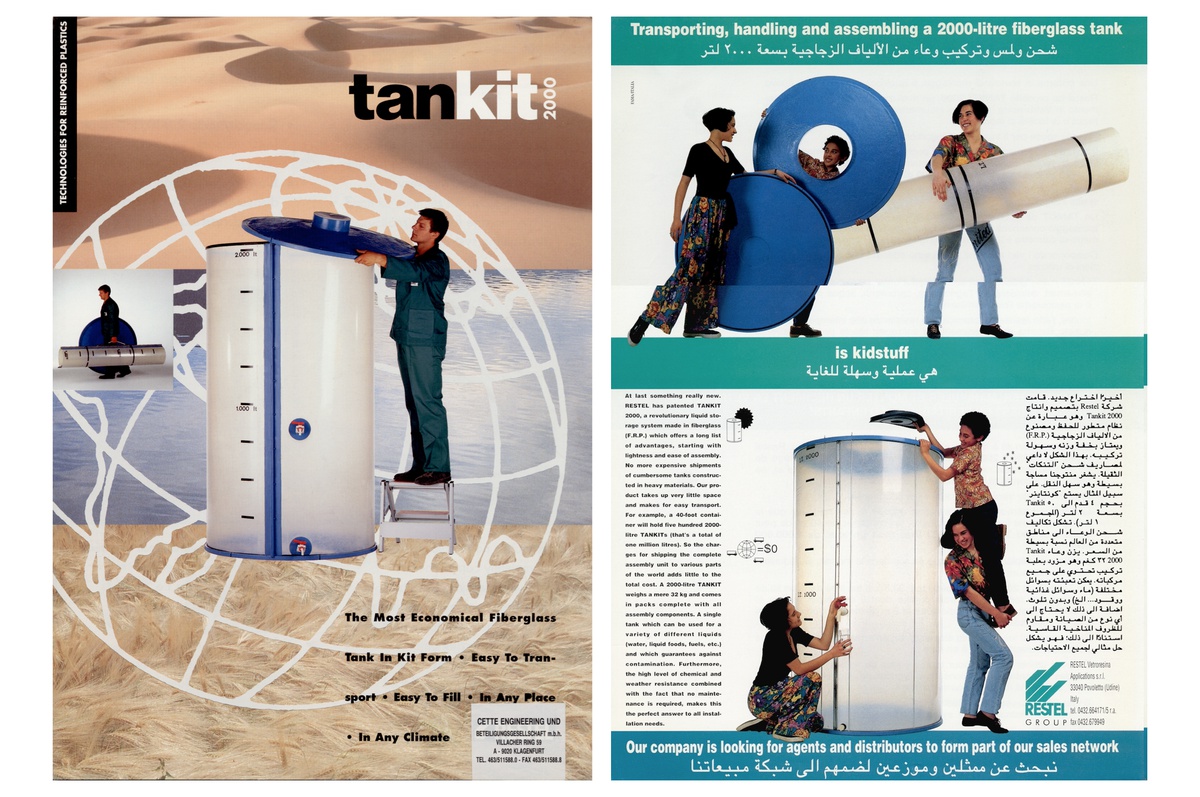
In his final years, Borgnolo was developing a project to produce clean energy from the sea.
Watly, the world’s first thermodynamic computer driven entirely by solar power is completely made in Friuli. It is an independent service station that purifies water, including seawater, from all forms of contamination (chemical, physical, bacteriological) and provides off-grid electricity and Internet connectivity.
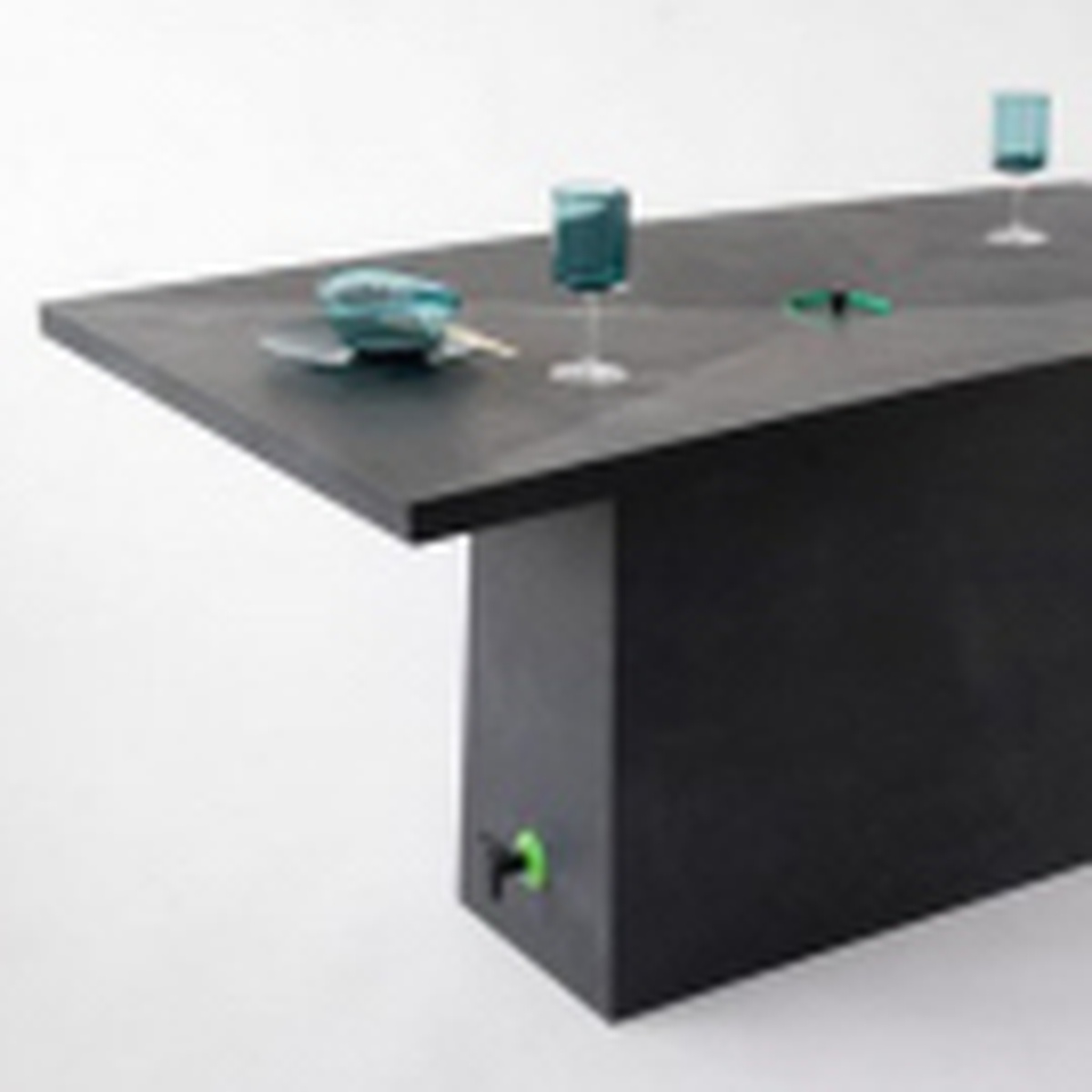
The subject of cisterns for collecting water is a highly topical one, especially in places where it is
important to harvest rainwater. There are many more or less elegant solutions. In 2010 Simon Davis patented a garden table able to harvest rainwater and store it for later use.
The Canadian studio Moss Sund Architects instead has developed a system for harvesting water called CISTA, which uses a vertical container in the place of a barrel or plastic container, around which a climbing plant is grown to hide it.
Agua in Situ represents an example of sustainable design based upon the idea of exploiting tropical climates. The water is sterilized by the filter
connected to the end of the distribution pipe.
